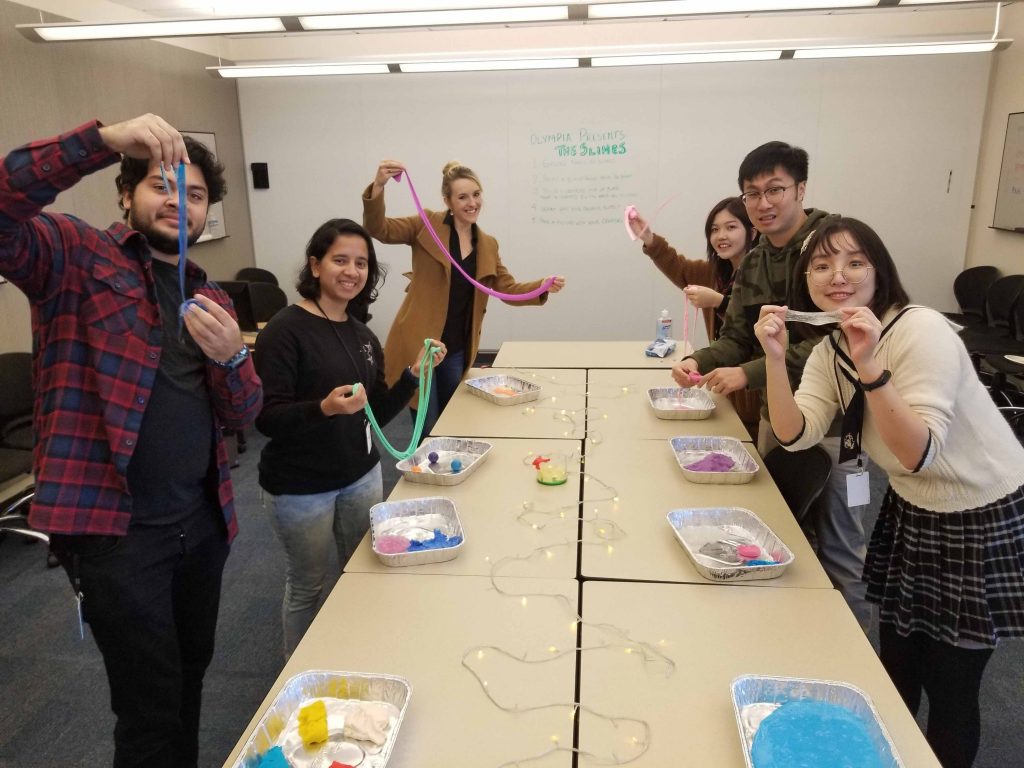This week was, in part, spent prepping for quarters. The other major focus of our week was beginning to prototype a slime material. This may be the most challenging part of our tech. If we can’t create this base slime material, then we need to pivot early and focus on a different aspect of the game. And, while there is plenty of territory to explore, this was an intriguing opportunity for interaction.
The team began by examining two different approaches. Looking at prototyping slime from scratch or building it from an existing tool. The NVidia FLEX was recommended on several occasions and we began to dig into examples of how it had been used for fluid simulations. On Friday, we were lucky enough to meet with a fluid engineer from the Schell games team. She also recommended FLEX but had some concerns about how it might integrate with Unity and the differences in the Unity plugin from the Unreal plugin. We are currently doing a brief dive into the tool in order to determine if there are any major differences between the two.
In the meantime, we began playing around with a small prototype of the “slime” in Unity. Although it was not as performative as we might have liked, it is definitely encouraging and were able to begin exploring some of the fluid properties that might help make something more slime-like.

Our focus for quarters however, was not showing any of our slime prototypes- see our presentationhere. We were very interested in seeing how playtesters might respond to “real” slime materials. What was intriguing about different kinds of slime, which were more attractive? We had a playtesting space in a conference room, and had more than 10 materials for our guests to test out. We also gave them a task: we had slips of paper, each with an action-verb on them. Our guests would draw one of these verbs and then create a creature, using our slime materials that would do this verb. We saw some great imaginings of what our slimes could look like.
We noticed that people loved slime that did not feel the way it looked. For example, it might look like a liquid, but could be broken in half. That cognitive versus experiential dissonance is something that we can capitalize on as we move forward. Creating object with surprising physical properties.